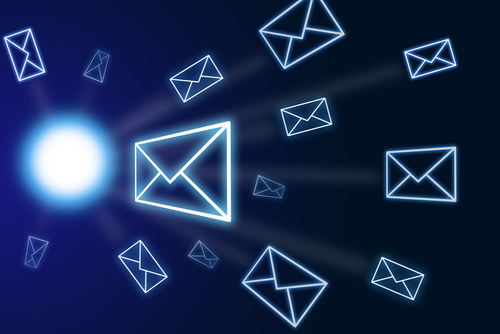
Think for a moment about how you receive most of your news each day. How much of it comes from online sources?
Whether it’s stories shared on Facebook and Twitter or articles featured on web portals like Google News and Fark, consuming news has become a nearly seamless part of navigating the internet.
In response, journalism is moving online, bringing it into the realm of new media. And when journalism changes, so must your approach to public relations.
Using Email Campaigns for Public Relations
Recents polls show that journalists overwhelmingly prefer receiving media kits via email over more traditional methods. With that in mind, you need to know how to optimize your kit for email and craft it to stand out in the best way possible.
1. Highly Branded
Ensure that your PR kit email shares a unique story about your brand. Position your logo and colors for easy recognition and be sure that they are well represented. Include graphs or infographics as a visually engaging way to tell your story.
2. Minimize Preview Pane Count
Most people have images blocked from downloading automatically in emails. So, if the bulk of your email is made up of images, all that will show initially is a bunch of empty panes, which won’t grab anyone’s attention. It’s okay to use a couple of small pictures, but make sure they don’t push all of the important information below the fold.
3. Make Good Use of “From” and “Subject” Forms
Use your company name in the “from” field, it’s more recognizable than your name. And remember that the subject is your headline; make it clear and attention-grabbing.
Also, remember that your mobile pre-header is essentially a meta description for your email and should support the headline. Make sure it’s a clear and relevant summary of your brand’s story, but keep it within 100 characters.
4. Avoid Spam Filter Triggers
Even the best email blast is a waste of time and energy if it never actually makes it into a journalist or blogger’s inbox. Don’t tempt the spam filter by using spammy words (just do a quick search if you’re unsure) and avoid excessive capitalization.
5. Include Embed Codes and Transferable Assets
The easier you make it to share your content, the more often it will be shared. Make the journalist’s job a little simpler by including embed codes with any images, slideshows and videos, and supplying written content that can be easily quoted or simply grabbed and reused.
6. Include a Sidebar
You don’t want to crowd your email with too much information, so it’s better to stick with your story and include a sidebar with links to additional company information (bios, summary of services and testimonials). This is also a great place to add social media bookmarks.
7. Never Add Attachments
Any information you want to include in your media kit email should be in the email itself or accessible via a link in the email. Everything about your kit should be convenient for the reader and downloading an attachment is simply not worth the time, especially on mobile.
8. Target Wisely
You may think you’ll beat the crowd if your email is waiting for journalists at the start of the day. That’s what the crowd thinks too.
Don’t let your PR kit get lost in a mountain of emails that will be blearily sorted through first thing in the morning. Think about when people are typically at their desks and send your kit at that time. Your email is much more likely to get proper attention if it’s read as soon as it arrives.
Improve Your Email Campaigns
These are just general guidelines, but by following them you can give your brand an edge in this changing digital PR landscape.